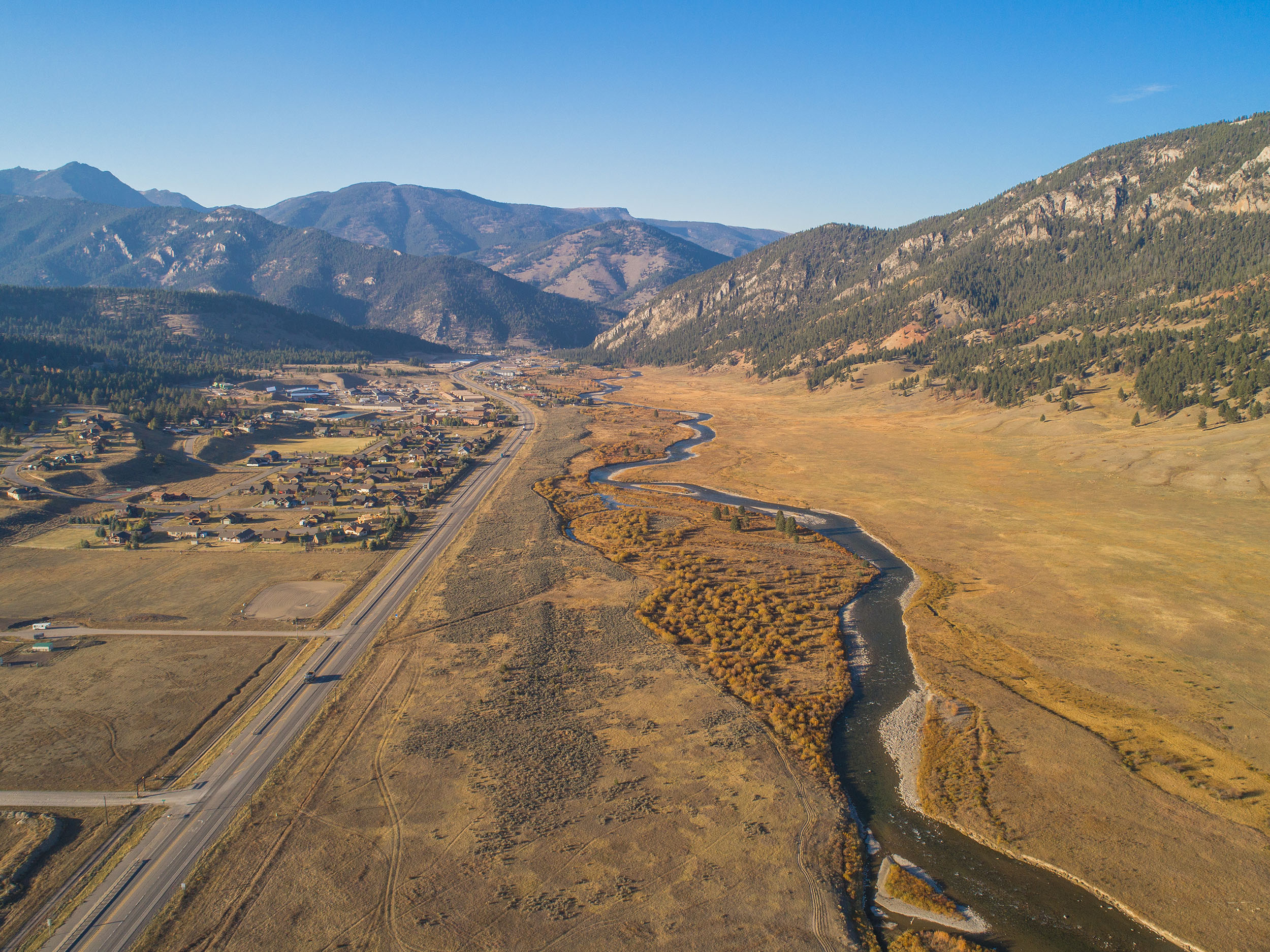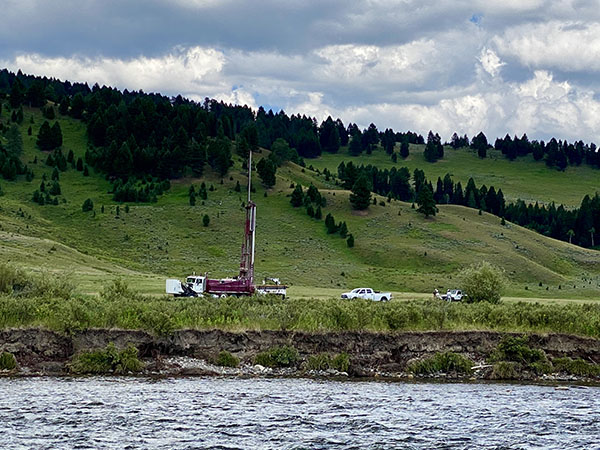Cleaning Up the Canyon
The Canyon area of Big Sky features some of the most beautiful stretches of water on the Gallatin River. From fly fishing to floating, it offers endless recreation and stunning scenic views.
As this area developed, more and more individual septic systems came online, managed primarily by small public water operators. This decentralized approach to wastewater management has negative impacts on water quality, as nutrients from inadequately treated effluent seep into the groundwater, and then to the Gallatin River.


The Canyon area of Big Sky features some of the most beautiful stretches of water on the Gallatin River. From fly fishing to floating, it offers endless recreation and stunning scenic views.
As this area developed, more and more individual septic systems came online, managed primarily by small public water operators. This decentralized approach to wastewater management has negative impacts on water quality, as nutrients from inadequately treated effluent seep into the groundwater, and then to the Gallatin River.
To protect water quality in this stretch of the Gallatin, the Task Force has long advocated for a Gallatin Canyon Water and Sewer District. In January of 2021, such a district was formed by four Canyon landowners—the Conoco service station, Lazy J, Scott Altman, and Buck’s T-4.
This new district is a huge step forward toward centralized wastewater treatment in the Canyon. Importantly, by forming a district, the Canyon landowners will now be able to connect to Big Sky’s new, state-of-the-art wastewater treatment plant, once it comes online in 2022.
Timeline
A timeline for central water system is contingent on many factors, including the construction of Big Sky’s new facility and pipeline construction that would connect Big Sky to the Canyon. Because of this, it is likely that Gallatin Canyon residents are still several years away from central water and sewer.
For now, only the above mentioned landowners are included in the Gallatin Canyon district, but in the future, ideally more landowners and businesses will connect, cleaning up the Canyon before septic system pollution reaches a tipping point.

Frequently Asked Questions
What are the advantages of forming a District?
Per the current language on the May 5th ballot, the 1% for Infrastructure funds are only available if a Canyon District is formed by December 31, 2022.
How is a District formed, and how does it work?
- A District can be formed by a petition from 100% of landowners within a proposed boundary or through a vote of residents within a boundary.
- More information can be found on the Montana Code Title 7 Chapter 13 Part 22 regarding county water and/or sewer districts.
- The District’s operation would be nearly identical to the BSCWSD, with an elected Board holding public meetings and voting on action items.
If a Canyon District is formed, does the BSCSWD WRRF have treatment capacity to accommodate the wastewater generated in the Canyon?
Can boundaries of the canyon move? Can the service area expand after a district is formed?
- Yes, the boundaries can move. The initial map was based on a 2008 study. Feedback will be sought from residents on options and The boundaries and options for wastewater solutions, whether it be for the entire canyon area or divided into smaller areas (“distributed systems”), will all be addressed in the study.
- And yes, the service area can expand after a district is formed. Annexation can be accomplished by a petition of contiguous owners who would like to join or through a vote. The District board can accept or reject a petition or establish a vote, if needed. Forced annexation has extremely tight requirements an objective of this District formation, no is it expected to be economical or enforceable.
What are the funding sources available? What would the 1% for Infrastructure Tax proposal cover?
- If the residents in the region form a District, funding options can include state and federal funds. They can also apply for resort tax funding. In 2019, the Montana State Legislature provided resort communities the opportunity to pursue an additional one-percent resort tax to be used strictly for infrastructure projects.
- 1% Resort Tax, if approved by voters on May 5th, would cover up to $12 million dollars for a lift station and conveyance to and from the Big Sky County Water and Sewer District. Specifically, it would cover the lift station and the forcemain from the lift station to bring wastewater up to the Big Sky WRRF, and a gravity pipeline that would convey highly treated water back to the Canyon for reuse and/or disposal.
- In addition, the 1% for Infrastructure Tax will pay for 60% of the total project cost (or $27M, whichever is less) of the cost to upgrade and expand the Big Sky WRRF. This would also benefit the Canyon residents as it reduces the overall cost of treatment for the co-solution alternative.
- Project costs for the Canyon WRRF and the BSCWSD Co-Solution scenarios are estimated at $29.7 million and $26.1 million, respectively. Costs for individual project components are presented below with the caveat that the forthcoming Conceptual Rate Study will provide a better ‘apples to apples’ comparison that factors in annual OM&R costs, BSCWSD treatment expansion implications, and corresponding user rate and connection fee structure.
| Project Component |
Scenario 1 Canyon WRRF |
Scenario 2 BSCWSD Co-solution |
| Collection | $7.6 Million | $7.6 Million |
| Treatment | $15.5 Million | TBD, BSCWSD Coordination |
| 2-Way Conveyance | NA | $11.7 Million |
| Disposal | $6.5 Million | $6.8 Million, BSCWSD Coordination |
| OM&R and Rates-Fees | TBD | TBD |
What happens with development if we do not form a Canyon Area District?
What are the disposal sites considered in the Canyon? What are likely disposal options?
Currently, groundwater recharge is the most likely disposal method. Several drainfields in the area could be repurposed and new ones might be built. Exact locations would be determined by a combination of good sites for recharge and landowner agreements. Groundwater infiltration of high-quality treated water (currently happening with relatively low quality treated water from septic tanks and small community system effluents) and irrigation from are options available now. Snowmaking may be an additional option in the future. Highly treated wastewater is essential for using these options for disposal.
What is the current nitrogen load from septic and community systems?
What are the pipe locations proposed? When does that get more exact?
What happens to the rest of the area?
What is the growth projection, and is there any cap on growth in the Canyon area?
5%. Permitted applications have grown 3.8% in the Canyon and 7% in the Big Sky Water and Sewer District area since 2008. Water rights limit the total feasible growth in the Canyon. The Gallatin watershed is a closed basin and senior water rights holders are downstream. Growth in this area of the Canyon is likely capped at approximately three times the existing development.
As temperatures rise with climate change, what are likely impacts to the river? Was climate change considered in the study?
Rising temperatures also increase the chances of algal blooms, so the river may be more sensitive to nutrient inputs in the future. Lower river levels due to drier years or earlier runoff, lead to increased water temperature and also higher nutrient concentrations.
Climate change was not in the scope of this study.
More Information
For more information about the new Gallatin Canyon County Water and Sewer District, please contact district founding member, Scott Altman.
For information about Gallatin Canyon water quality, please reach out to headwaters@gallatinrivertaskforce.org.
For updates on the new Big Sky County Water and Sewer District wastewater treatment plant, connect with office@wsd363.com.
